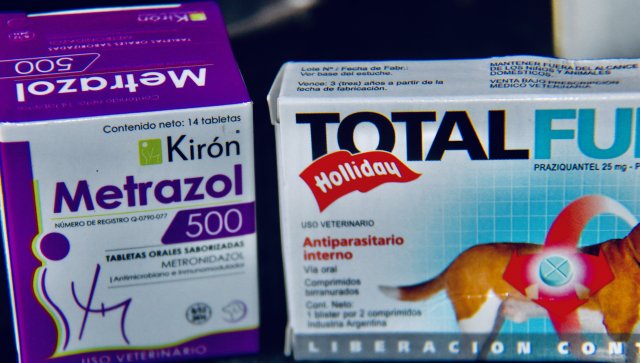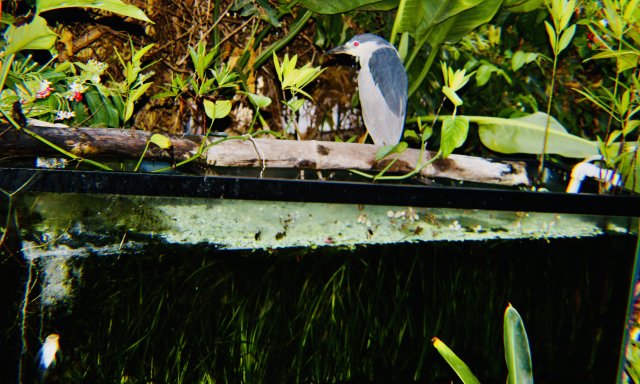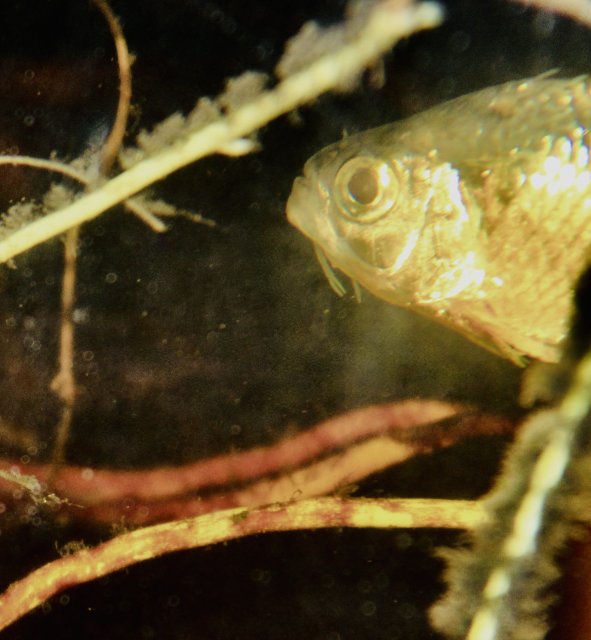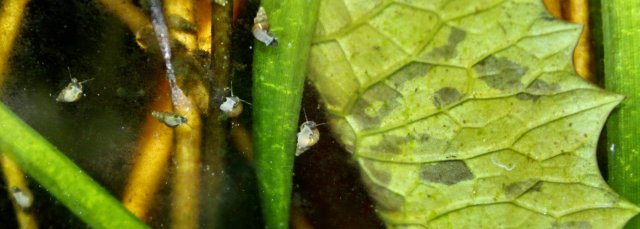Unintentional of course, but it is a constant danger, none the less.
So I’m posting this as a kind of generic heads up
Whether its collecting fish for a tank, or collecting feeders,
or buying feeders from pond raised goldfish, the gamble of bringing in epidemic parasitic infections is always there.
The first time this happened to me, was about 5 years ago, when a number of fish were collected for me by a friend.
Luckily upon inspection of each fish, Lernaea cyprinacea were spotted quite soon, and I was able to remove the adult Lernaea with a tweezers, before they reproduced.
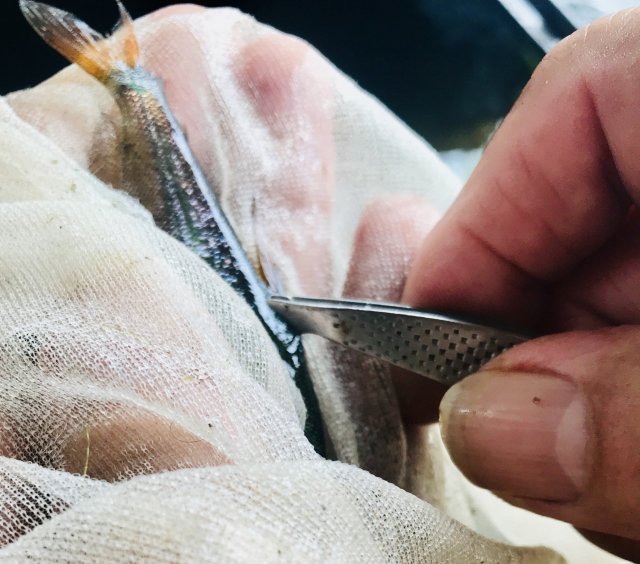

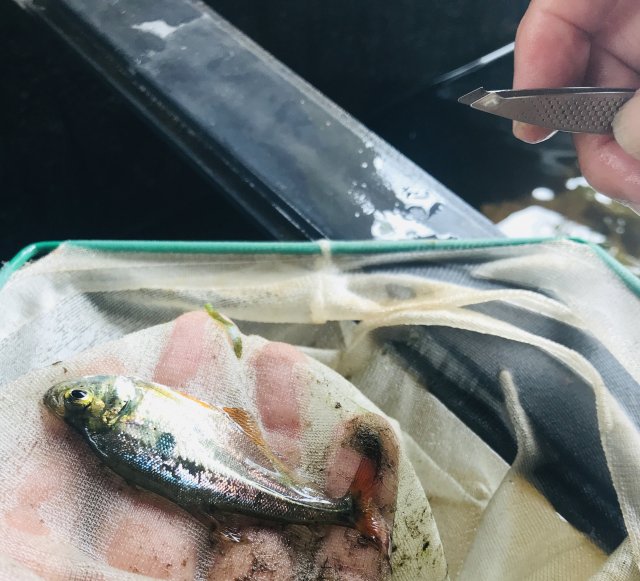
But also,
as an extra precaution, I also added 18 gallons (of 35ppt (parts per thousand)) sea water to the 180 gal tank (I live on an island about 50 ft from the Pacific ocean at high tide),
so getting bags of salt here can be a chore, the sea water is the easiest way of bringing the tanks salinity up to at least 3ppt, which will (in theory) kill any larval Lernaea.
That is also dose equivalent to adding 3 lbs of salt per 100 galloThe “adult Lernaea” are immune to such salinity, but the larvae are not.


Collecting fish again myself a couple weeks ago, even though I try to inspect each fish in a specimen container, I must have missed at least one Lernaea that slipped thru unseen, and because my tank is very tannin stained it took a while to notice, and it had spread to all other Cyprinids.
Cyprinids are the Lernaea’s most common victims, meaning tetras, and live bearers here in Panama, in other places, barbs, danios, and carp are very susceptible, and in the U.S. minnows, goldfish, and carp are most often infected.
Lernaea are also known to parasitize other aquatic animals beyond fish, Axolotils, tadpoles, and even mollusks, among others
After finally noticing the scourge much too late, I was able to get my hands on Methylene Blue to assassinate the larval Lernaea, and slowed the epidemic, but it has had little efficacy against the adult Lernaea.
Within the last few weeks, almost all tetras had succumbed, a number catfish and a pleco or 2 were turning up dead daily.
The cichlids, and gobies seem to have faired well so far, but once all tetras, and catfish have died, I assume the Lernaea will move on to less hospitable hosts.
The best and only realistic way to actually see Lernaea thru the tannin stained tank water, and busily swimming tetras, has turned out to be by taking random photos.

On the Brycon tetra above, you can see an adult Lernaea in the dorsal. Another symptom was the tetras swimming erratically in circles near the waters surface.
One of the worst cases, on this tetra below.

Beside the adult Lernaea parasitizing the dorsal and caudal finned areas, you can see where larval Lernaea are parasitizing inside the body, creating internal havoc thru red visible lesions.
With this, I will end part #1, but will continue to add to the saga as new treatments are added.
I am able to get to the mainland tomorrow, and hope to source Dimilin, and or Praziquantel.
I thought about posting this only in the Disease section, but feel its scope goes beyond that, and hope others can learn from my mistakes.
So I’m posting this as a kind of generic heads up
Whether its collecting fish for a tank, or collecting feeders,
or buying feeders from pond raised goldfish, the gamble of bringing in epidemic parasitic infections is always there.
The first time this happened to me, was about 5 years ago, when a number of fish were collected for me by a friend.
Luckily upon inspection of each fish, Lernaea cyprinacea were spotted quite soon, and I was able to remove the adult Lernaea with a tweezers, before they reproduced.



But also,
as an extra precaution, I also added 18 gallons (of 35ppt (parts per thousand)) sea water to the 180 gal tank (I live on an island about 50 ft from the Pacific ocean at high tide),
so getting bags of salt here can be a chore, the sea water is the easiest way of bringing the tanks salinity up to at least 3ppt, which will (in theory) kill any larval Lernaea.
That is also dose equivalent to adding 3 lbs of salt per 100 galloThe “adult Lernaea” are immune to such salinity, but the larvae are not.


Collecting fish again myself a couple weeks ago, even though I try to inspect each fish in a specimen container, I must have missed at least one Lernaea that slipped thru unseen, and because my tank is very tannin stained it took a while to notice, and it had spread to all other Cyprinids.
Cyprinids are the Lernaea’s most common victims, meaning tetras, and live bearers here in Panama, in other places, barbs, danios, and carp are very susceptible, and in the U.S. minnows, goldfish, and carp are most often infected.
Lernaea are also known to parasitize other aquatic animals beyond fish, Axolotils, tadpoles, and even mollusks, among others
After finally noticing the scourge much too late, I was able to get my hands on Methylene Blue to assassinate the larval Lernaea, and slowed the epidemic, but it has had little efficacy against the adult Lernaea.
Within the last few weeks, almost all tetras had succumbed, a number catfish and a pleco or 2 were turning up dead daily.
The cichlids, and gobies seem to have faired well so far, but once all tetras, and catfish have died, I assume the Lernaea will move on to less hospitable hosts.
The best and only realistic way to actually see Lernaea thru the tannin stained tank water, and busily swimming tetras, has turned out to be by taking random photos.

On the Brycon tetra above, you can see an adult Lernaea in the dorsal. Another symptom was the tetras swimming erratically in circles near the waters surface.
One of the worst cases, on this tetra below.

Beside the adult Lernaea parasitizing the dorsal and caudal finned areas, you can see where larval Lernaea are parasitizing inside the body, creating internal havoc thru red visible lesions.
With this, I will end part #1, but will continue to add to the saga as new treatments are added.
I am able to get to the mainland tomorrow, and hope to source Dimilin, and or Praziquantel.
I thought about posting this only in the Disease section, but feel its scope goes beyond that, and hope others can learn from my mistakes.



